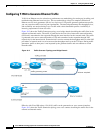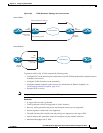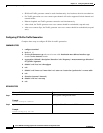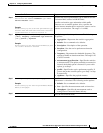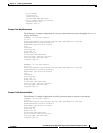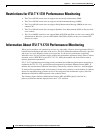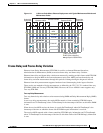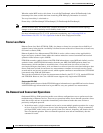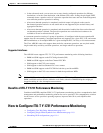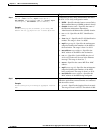
11-2
Cisco ASR 901 Series Aggregation Services Router Software Configuration Guide
OL-23826-09
Chapter 11 ITU-T Y.1731 Performance Monitoring
Restrictions for ITU-T Y.1731 Performance Monitoring
Restrictions for ITU-T Y.1731 Performance Monitoring
• The Cisco ASR 901 router does not support one-way delay measurement (1DM).
• The Cisco ASR 901 router does not support Loss Measurement Message (LMM).
• The Cisco ASR 901 router does not support Delay Measurement Message (DMM) on the cross
connect EVC.
• The Cisco ASR 901 router does not support Synthetic Loss Measurement (SLM) on the port level
cross connect.
• The Cisco ASR901 router does not support Multi-NNI CFM and SLM over the cross-connect EFP
simultaneously. However, you can enable Multi-NNI CFM or SLM over the cross-connect EFP
function in a node.
Information About ITU-T Y.1731 Performance Monitoring
When service providers sell connectivity services to a subscriber, a Service Level Agreement (SLA) is
reached between the buyer and seller of the service. The SLA defines the attributes offered by a provider
and serves as a legal obligation on the service provider. As the level of performance required by
subscribers rises, service providers need to monitor the performance parameters being offered. Various
standards, such as IEEE 802.1ag and ITU-T Y.1731, define the methods and frame formats used to
measure performance parameters.
ITU-T Y.1731 performance monitoring provides standards-based Ethernet performance monitoring as
outlined in the ITU-T Y-1731 specification and interpreted by the Metro Ethernet Forum (MEF). It
includes the measurement of Ethernet frame delay, frame delay variation, frame loss, and throughput.
To measure SLA parameters such as frame delay or frame delay variation, a small number of synthetic
frames are transmitted along with the service to the end point of the maintenance region, where the
Maintenance End Point (MEP) responds to the synthetic frame.
The following figure illustrates Maintenance Entities (ME) and MEP typically involved in a
point-to-point metro ethernet deployment for the Y.1731 standard.



